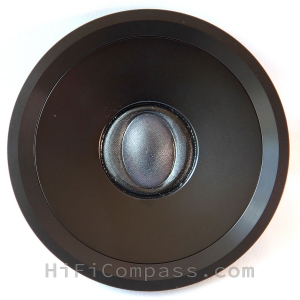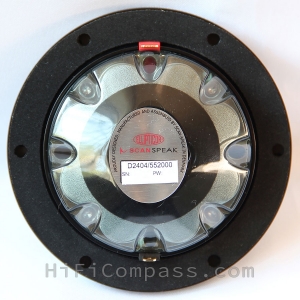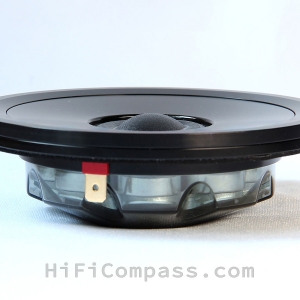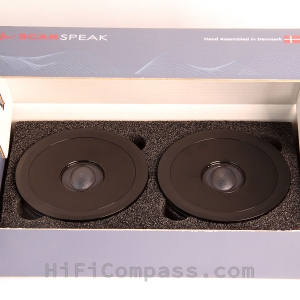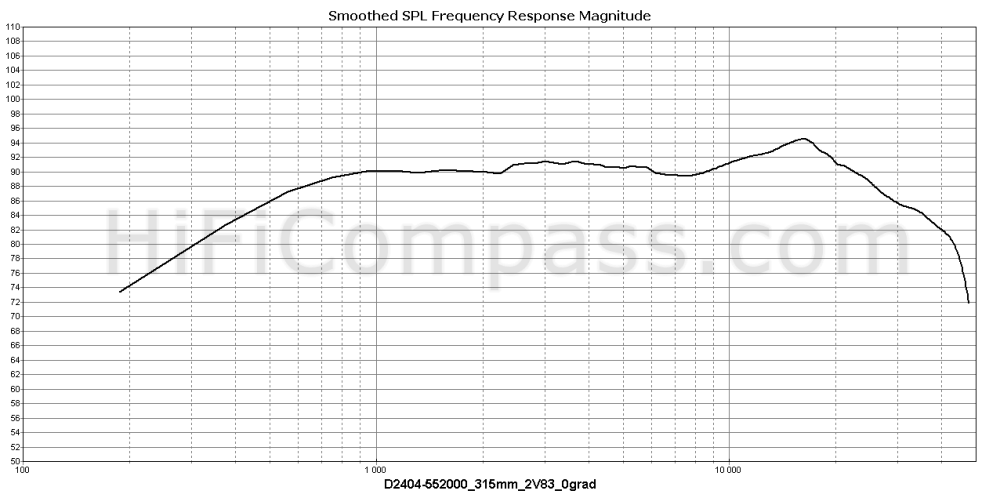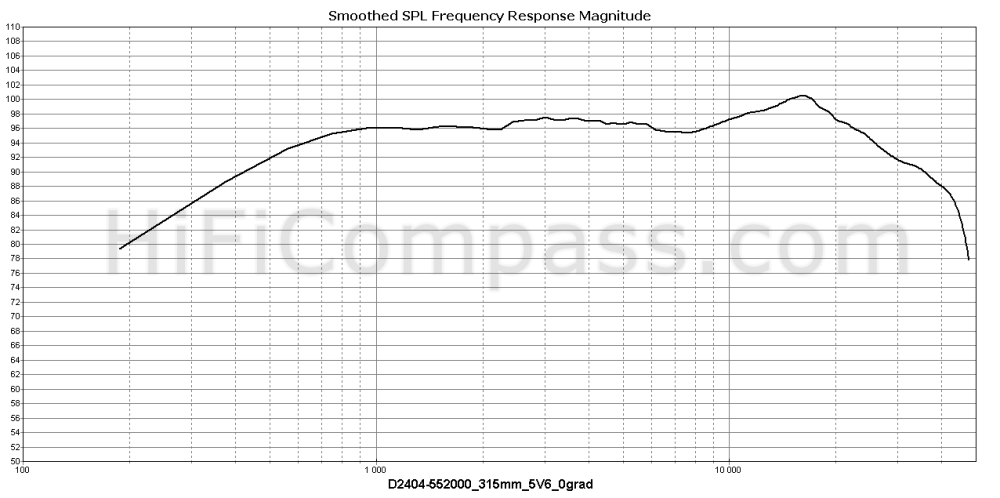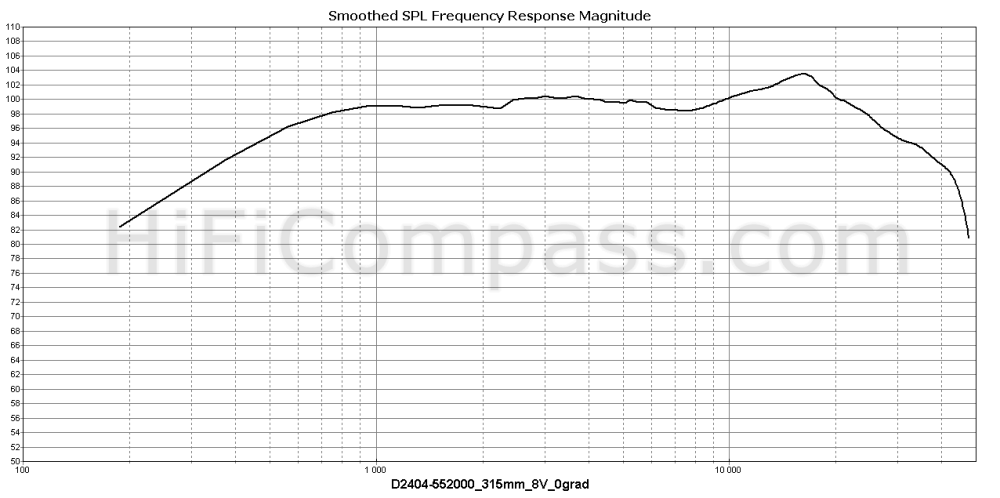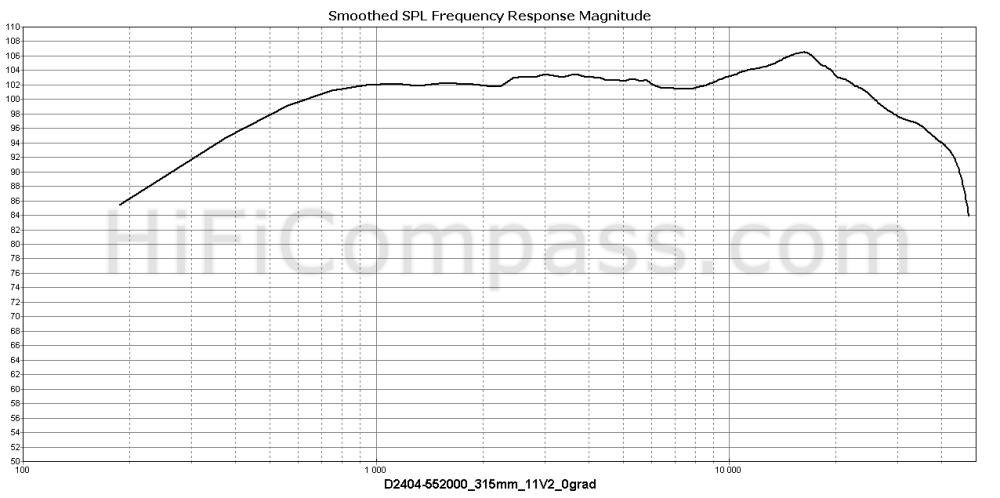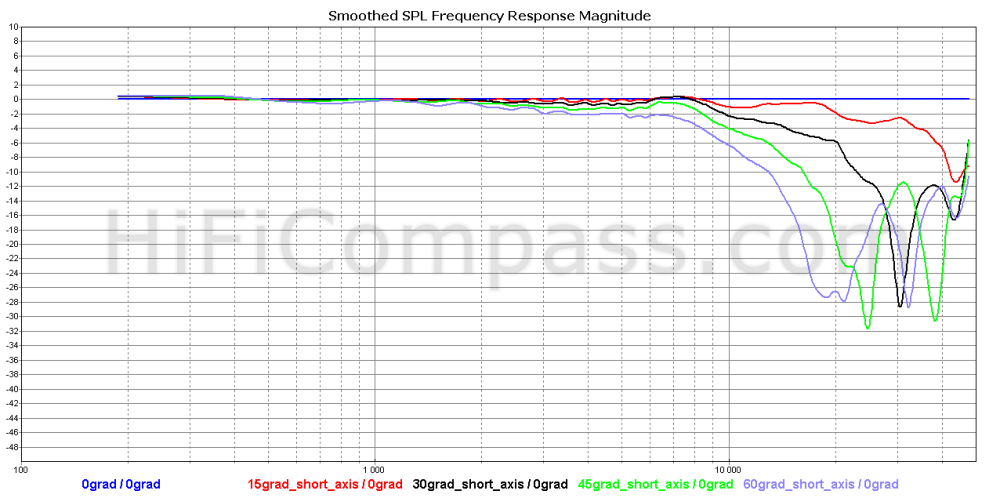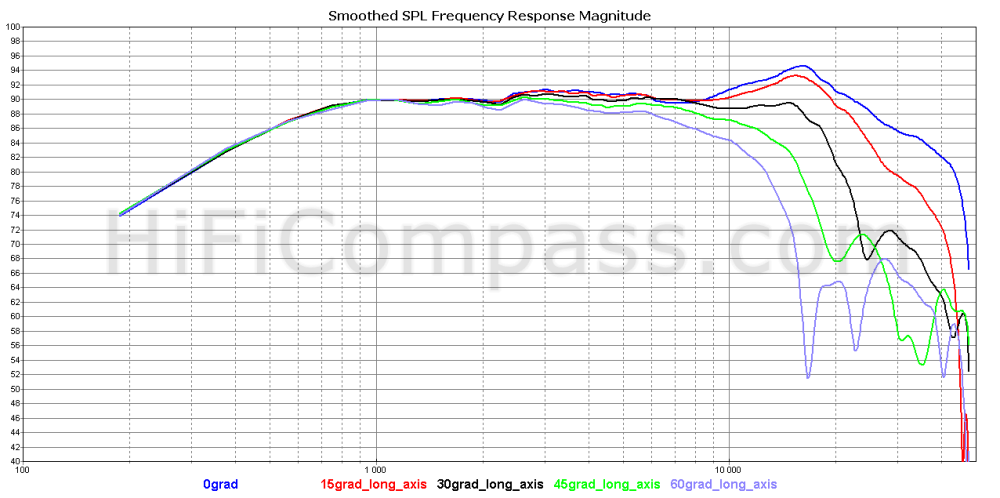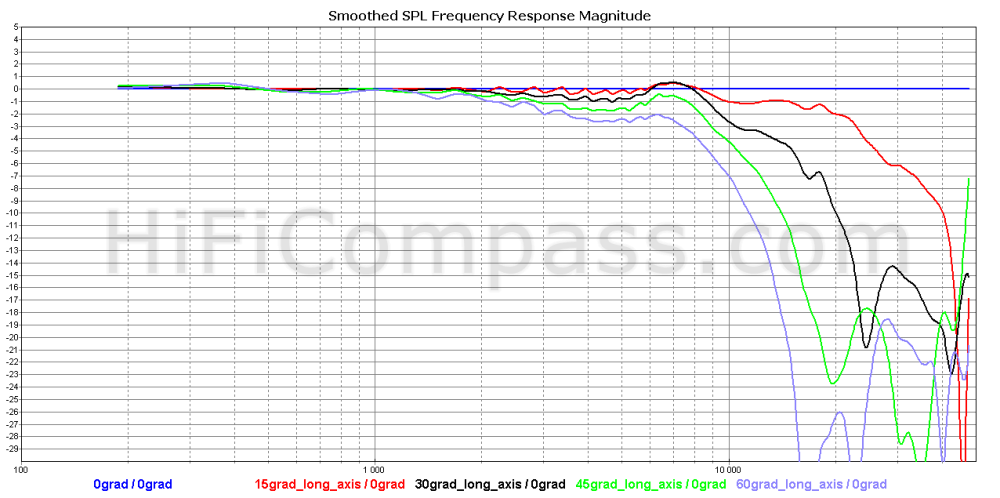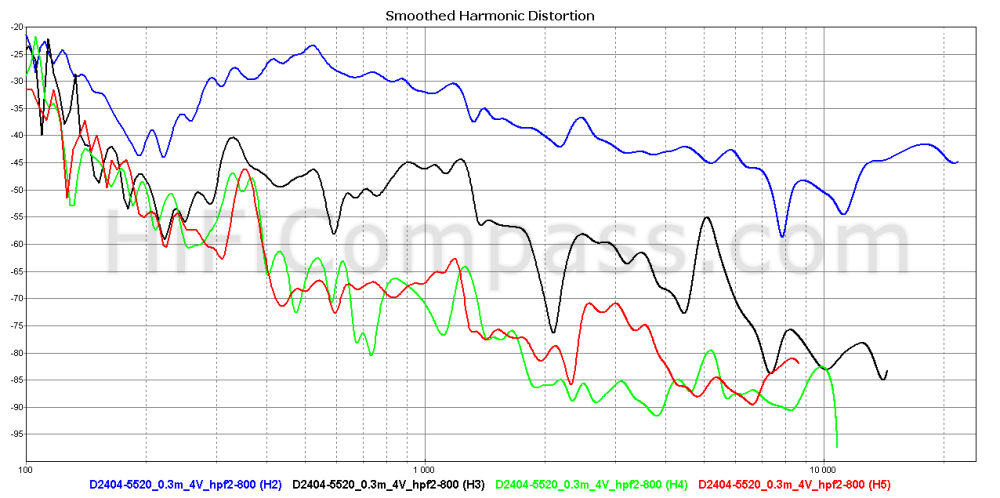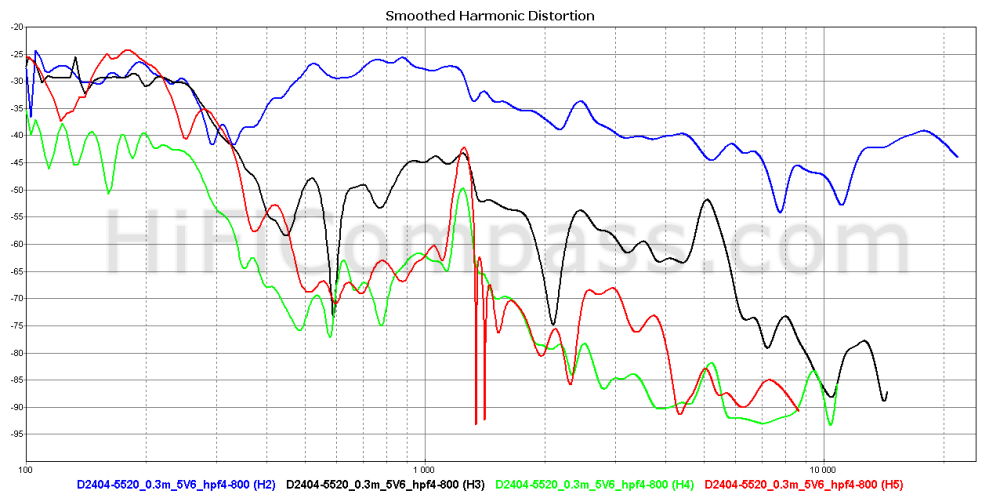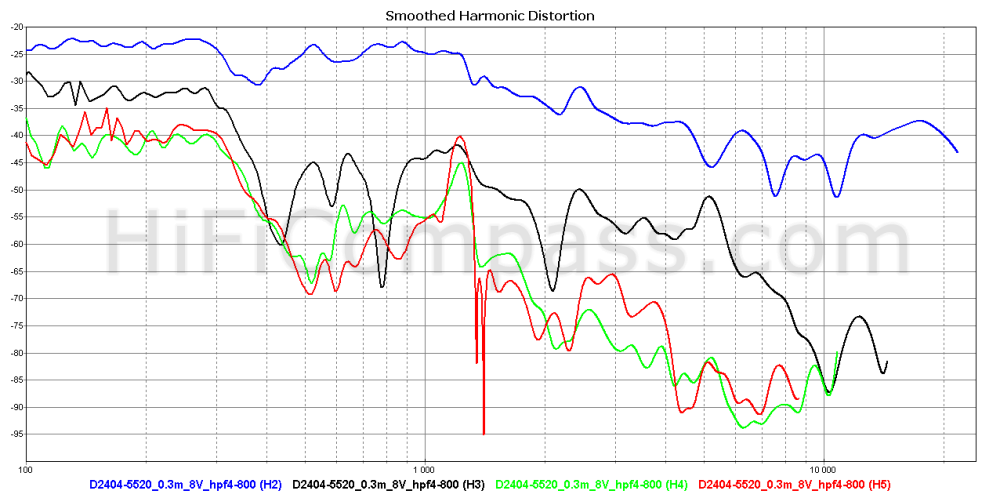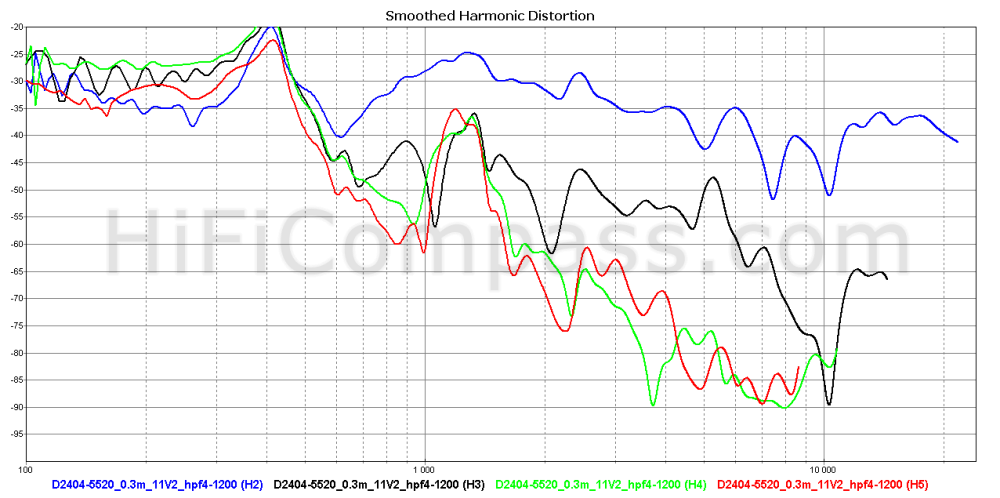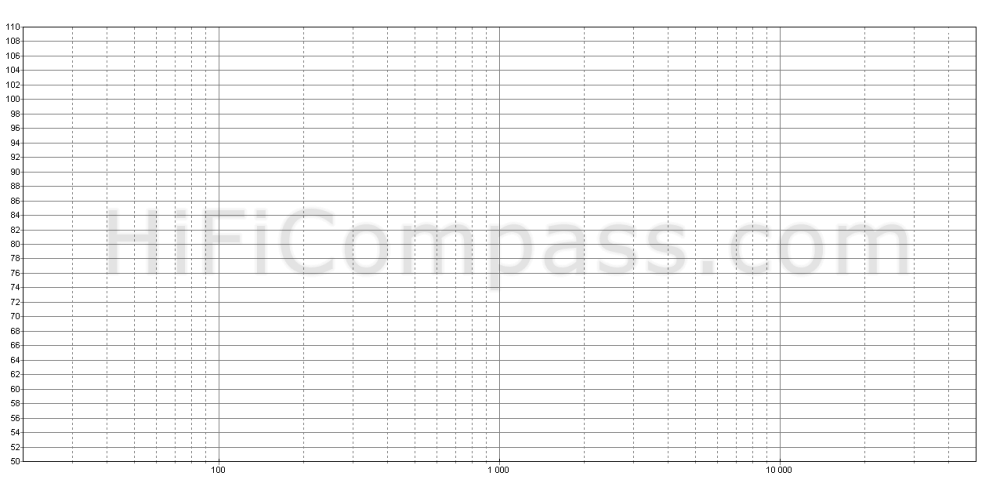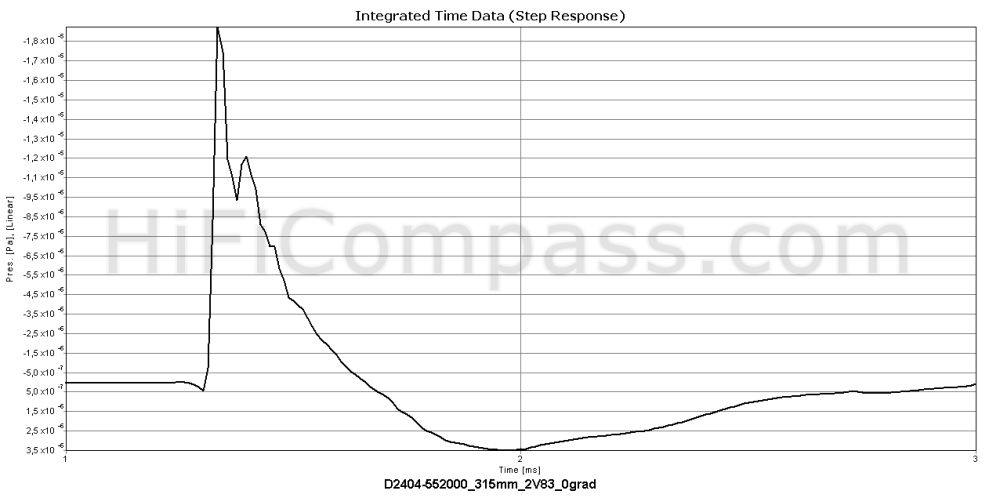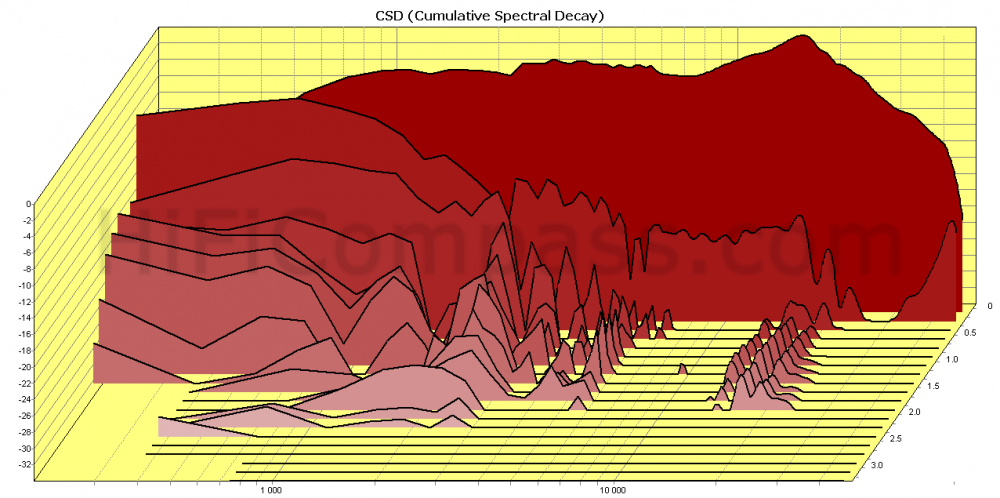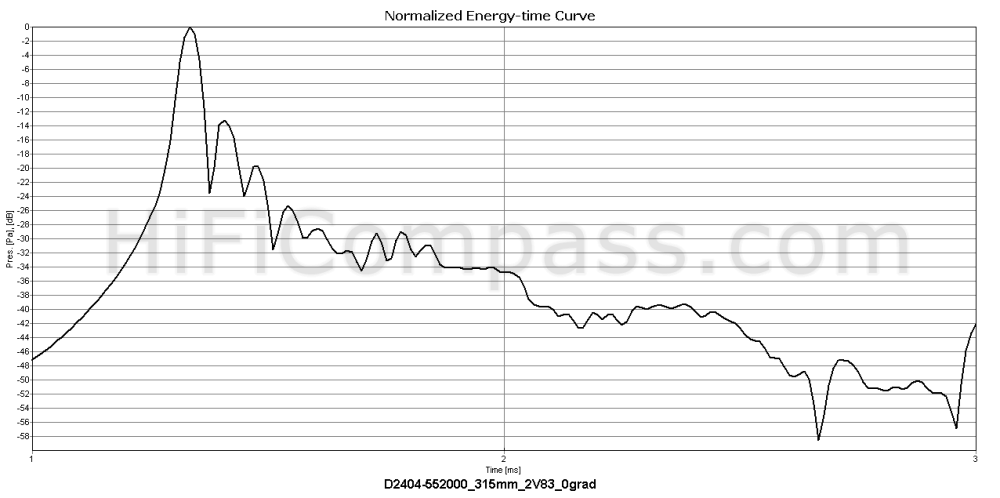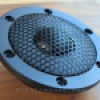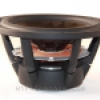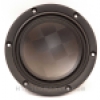The HD measurements (315 mm) at voltage levels 2.83 - 4 Volt were carried out with High Pass Filter "on" (2nd order Butterworth type, 800 Hz cutoff, HPF2-800)
The HD measurements (315 mm) at voltage levels 5.6 - 8 Volt were carried out with High Pass Filter "on" (4th order Butterworth type, 800 Hz cutoff, HPF4-800)
The HD measurements (315 mm) at voltage level 11.2 Volt were carried out with High Pass Filter "on" (4th order Butterworth type, 1200 Hz cutoff, HPF4-1200)
The D2404/552000 tweeter belongs to the Ellipticor line, which is now the top line of the Danish company Scan-Speak. It came out in 2020, two years after the introduction of its big brother D3404/552000. It contains almost all the attributes that we are used to seeing in HighEnd class products:
- Massive black anodized precision-turned mounting flange
- Powerful magnet system with neodymium magnets
- Copper cap on the pole of the motor
- Excellent design - very beautiful tweeter
- Unfriendly price - $500/piece
However, some facts for a product of this class and price are disappointing:
- Bad quality control in the production. Both samples of the matched pair out of the box suffer from rocking and rubbing of the voice coil in the magnetic gap. At several frequencies up to 1.3 kHz at a voltage of 2 Volts there is a clearly audible annoying rubbing during the sine sweep. This is the first time I've encountered such a phenomenon. Yes, there are tweeters with this effect, but it appears at lower frequencies and at much higher signal levels.
It was this rubbing that made me use high-pass filter of 4th order, not of 2nd one as usual, when measuring harmonic distortion at levels of 5.6 - 8 Volts. And at 11.2 Volts I was forced to use the 4th order and the 1.2 kHz cutoff, which still didn't get rid of the resonance rubbing at 1.3 kHz.
If this is normal for the tweeter and is intended by the manufacturer, then this means that I don't understand something. But if this is a manufacturing defect, then how could this happen in two top-level tweeters from a reputable manufacturer at once?
- The harmonic distortion leaves much to be desired
- Insufficiently high sensitivity for such a powerful magnetic system and a four-ohm voice coil
The graph below shows that at a voltage of 11.2 volts, even with fourth-order high-pass filtering and a cutoff frequency of 2.5 kHz, it is not possible to get rid of the voice coil rubbing and the burst of distortion at 1.3 kHz:
The resonance at 1.3 kHz disappeared only after increasing the cutoff frequency to 3 kHz: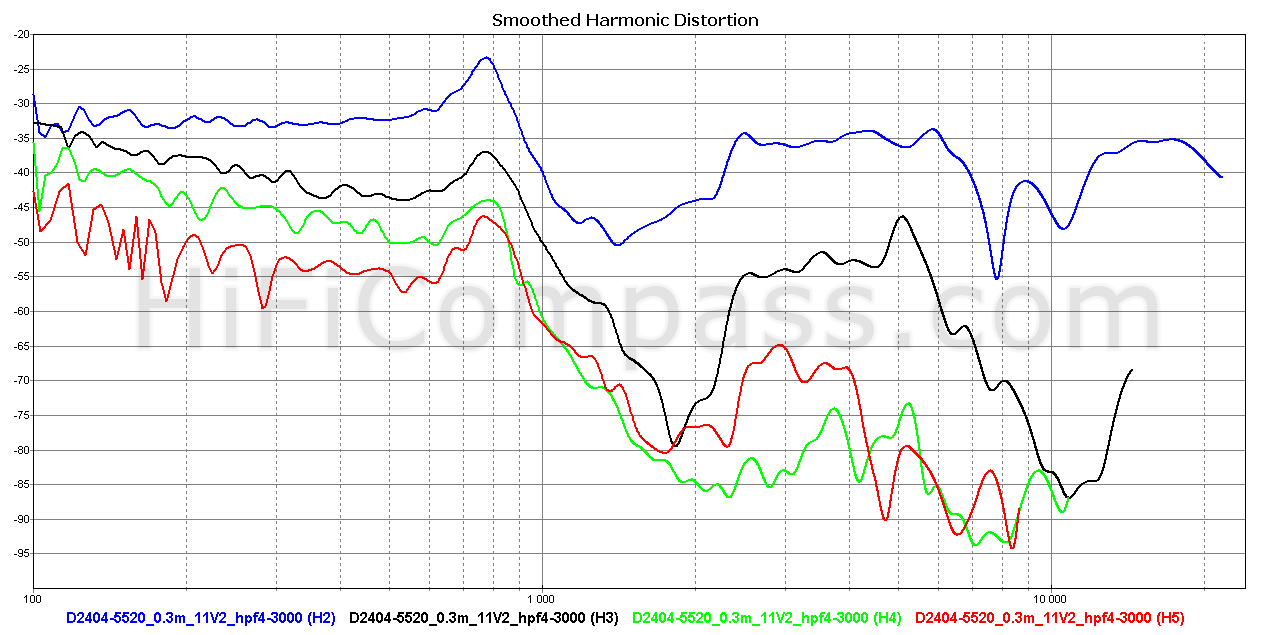
But if you don’t like high-order filtering and would like to use a second-order rather than a fourth-order HPF, then even at a cutoff frequency of 6 kHz, the resonance at 1.3 kHz will still remind you of itself:
The D2404/552000 tweeter lacks a structural element that presents in all Scan-Speak tweeters of the Revelator, Illuminator families, as well as in the big brother from the Ellipticor line, namely, the sound-absorbing felt "mushroom" under the dome space. This inevitably contributes to the tweeter's sonic signature by adding an extra "airiness".
All things considered, I unfortunately can't rate the D2404/552000 tweeter more than two stars. If it were not for the voice coil rubbing, then it would be possible to give it three stars
